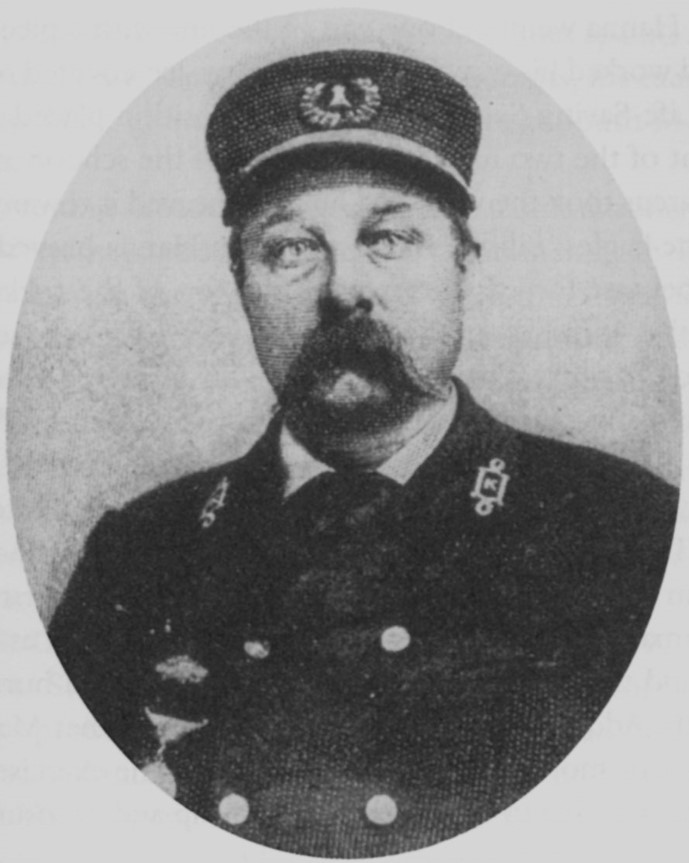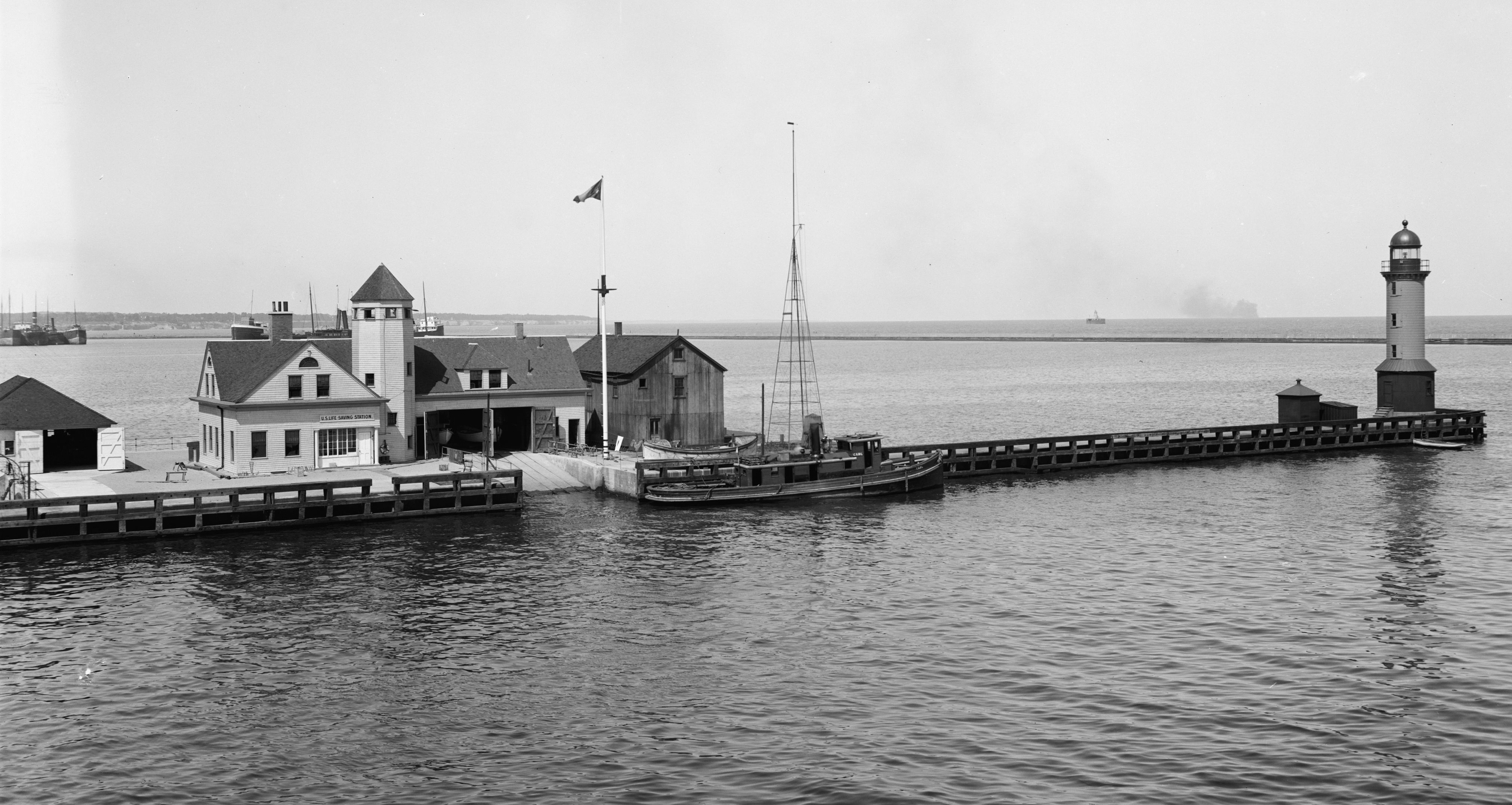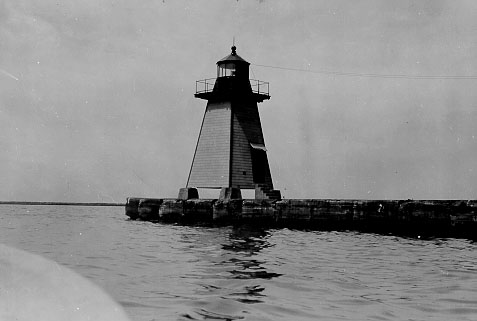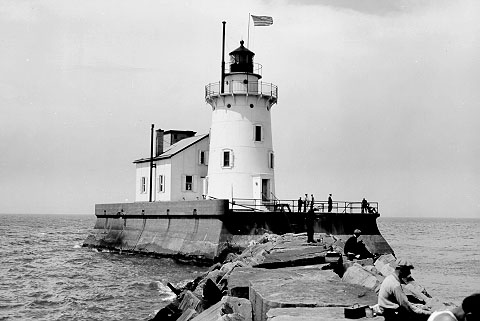 Son of Thomas and Catherine Hatch, Frederick Thomas Hatch was born Feb. 14, 1859, at Henderson Harbor, New York. His father was a merchant sailor on Great Lakes steamships. During his career, Thomas Hatch moved his family first to Gallop Island and later to Glen Haven, Michigan.
Son of Thomas and Catherine Hatch, Frederick Thomas Hatch was born Feb. 14, 1859, at Henderson Harbor, New York. His father was a merchant sailor on Great Lakes steamships. During his career, Thomas Hatch moved his family first to Gallop Island and later to Glen Haven, Michigan.
In 1878, having completed a basic level of education, Frederick Hatch shipped out from Glen Haven at age 19. He served as a merchant sailor aboard the Great Lakes steamer Arabia of the Western Transit Line for three years. In the spring of 1881, following his time as a merchant seaman, Frederick signed on as a surfman with the U.S. Life-Saving Service.
Hatch’s first Gold Lifesaving Medal rescue occurred during his time as a surfman at the Cleveland Lifesaving Station. Over the three days of Oct. 31, Nov. 1, and Nov. 11, 1883, Hatch was a member of a station crew commanded by Keeper Charles Goodwin that rescued 29 survivors from three separate schooner wrecks. These unfortunate vessels were the Sophia Minch, John B. Merrill, and John T. Johnson and all three wrecked off the entrance to Cleveland Harbor during severe nighttime gales.
Hatch, Keeper Goodwin and the other surfmen received the Gold Medal for rescuing the crew of the Sophia Minch. On Oct. 31st, the Minch arrived off Cleveland Harbor with a cargo of iron ore bound from Marquette, Michigan. While attempting to make the harbor entrance, heavy seas disabled the wooden schooner’s rudder forcing its crew to anchor off the harbor’s east pier and signal for help.
The local tugboat Peter Smith set out to provide assistance. Deeming one tug insufficient to tow his heavily-laden vessel, Minch’s captain refused to weigh anchor until another tug could assist. Meanwhile, Keeper Goodwin and his lifesaving crew, except for a man left in charge of the station, jumped aboard the Smith. Once alongside the Minch, the lifesaving crew boarded the schooner with Surfman Lawrence Distel left aboard the tug to handle towlines. A second tug, the Fanny Tuthill, responded to Minch’s request for help and arrived on scene. As soon as the towlines were secured to the Minch and schooner’s anchors tripped, the two tugs labored toward the harbor entrance with the schooner in tow.
schooner in tow.
Before the tugs got far, both towlines parted. Unable to assist the Minch further, the tugboats sought safety behind the breakwater. The seas dragged the Minch toward the rocks on shore and the schooner’s hold began to flood. With heavy seas breaking over the deck, Minch’s captain decided to scuttle the schooner to facilitate later salvage efforts. The schooner sank in shoal water with its deck slightly awash and all those on board took to the forward rigging for safety. One of the surfmen and the Minch’s mate were cut off from the rest and climbed up the mizzenmast rigging located back aft.
Having returned to the station from tug Peter Smith, Surfman Distel took action. Although he had only one surfman from the station to assist him, Distel located five volunteers who together with the surfmen manned the station’s beach apparatus cart and pulled it to the shoreline closest to the sunken schooner. The first shot from the beach cart’s Lyle Gun landed a messenger line just abaft the forward masts where the survivors were located. The breeches buoy apparatus was quickly rigged and Keeper Goodwin rode it back ashore to take charge of the operation. The rest of the men in the forward rigging were brought ashore except for Surfman Hatch, who remained aboard to help the last two men clinging to the mizzenmast rigging.
 The two men trapped in the mizzenmast rigging could not reach the breeches buoy located forward. Surfman Distel rode out to the wreck in the breeches buoy to help Hatch save the men, however, Hatch decided to go aft by himself to assist the trapped men. It would be a hazardous undertaking, as the main boom and gaff were whipping wildly from side to side. Preparing for the dangerous task, Hatch told Distel that if he did not return, Distel was to go ashore in the breeches buoy and report the situation to Keeper Goodwin.
The two men trapped in the mizzenmast rigging could not reach the breeches buoy located forward. Surfman Distel rode out to the wreck in the breeches buoy to help Hatch save the men, however, Hatch decided to go aft by himself to assist the trapped men. It would be a hazardous undertaking, as the main boom and gaff were whipping wildly from side to side. Preparing for the dangerous task, Hatch told Distel that if he did not return, Distel was to go ashore in the breeches buoy and report the situation to Keeper Goodwin.
Hatch began his struggle by climbing and sliding along one of the mizzenmast stays. Miraculously, he reached the two men clinging to the rigging, who were wet and cold and likely hypothermic. Sea and wind conditions made it impossible for them to return forward to the breeches buoy tied to the rigging. Meanwhile, Distel followed instructions when Hatch failed to return and came ashore where he briefed Keeper Goodwin. The breeches buoy was then unrigged, the Lyle Gun re-positioned, and a second messenger line  shot off to the aft rigging. Hatch quickly hauled in the hawser and re-rigged the breeches buoy. All three men were pulled safely ashore with Hatch returning last.
shot off to the aft rigging. Hatch quickly hauled in the hawser and re-rigged the breeches buoy. All three men were pulled safely ashore with Hatch returning last.
After the storm, Minch’s iron-ore cargo was salvaged and the schooner refloated and towed into Cleveland Harbor. The subsequent rescues of ship’s crew from the John B. Merrill and the John T. Johnson were equally hazardous yet successful and, in the case of the Merrill, Surfman Hatch stepped forward once again to board the wreck, rig the breeches buoy, and save lives.
On Dec. 3, 1884, Frederick Hatch, Keeper Goodwin and the station crew, were awarded the Gold Lifesaving Medal for their heroic rescue. In his three-year career in the Life-Saving Service, Hatch had clearly demonstrated a dedication to saving the lives of those in peril, even at the risk of his own. In doing so, he maintained the highest standards of devotion to duty as a lifesaver.